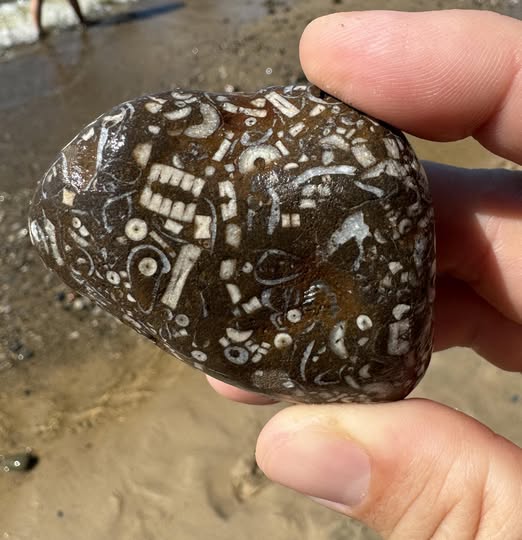Found in Lake Michigan, almost doesn’t look real. Why is that?

The rock in your hand is a stunning example of fossiliferous limestone, a type of sedimentary rock formed from the compressed remains of ancient marine life.

What makes this specimen especially captivating is the visible collection of tiny white fossils embedded in its dark stone matrix. These fossils likely date back to the Paleozoic Era, around 400 to 450 million years ago, when much of the Earth was covered by shallow seas teeming with life. Among the fossils, you can probably spot Orthoceras, extinct cephalopods with long, chambered shells; their remains appear as elongated, segmented patterns.
You may also see crinoid stems, which resemble tiny stacked discs or beads — remnants of ancient sea lilies related to modern starfish. Other features might include brachiopods or bryozoans, both shelled sea creatures, and fragments of prehistoric corals. These marine animals died and settled onto the seafloor, where layers of sediment eventually buried and preserved them through the process of compression and mineralization, forming the stone over millions of years.
Fossiliferous limestone like this is often found in regions that were once ancient seabeds, such as parts of the United States (like Michigan or Ohio), Morocco, or parts of Europe. Thanks to natural polishing by ocean waves or rivers, these stones sometimes appear beautifully smoothed, making the intricate fossils more visible. This particular piece is not only geologically significant but also serves as a tangible link to Earth’s prehistoric oceans. Holding it is like holding a slice of natural history — a snapshot of marine life that existed long before dinosaurs roamed the Earth. Fossil collectors, geologists, and even jewelry makers often treasure such stones for their beauty and scientific value.